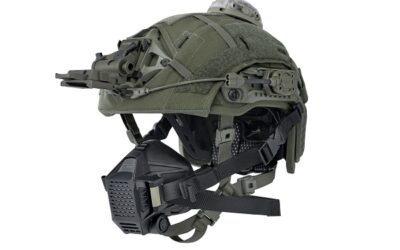Sandia National Labs Leveraging Natural Behaviours
Sandia Corporation is homing in on the secret of how dragonfly brains may be hard-wired to be extraordinarily efficient at calculating complex trajectories. The lessons learned may well provide significant insight into improving future missile intercept solutions.
The Sandia research is examining whether dragonfly-inspired computing could improve missile defence systems, which have the similar task of intercepting an object in flight, by making on-board computers smaller without sacrificing speed or accuracy. Dragonflies catch 95% of their prey, crowning them one of the top predators in the world. In recent computer simulations, faux dragonflies in a simplified virtual environment successfully caught their prey using computer algorithms designed to mimic the way a dragonfly processes visual information while hunting. The positive test results show the programming is fundamentally a sound model.
Computational neuroscientist Frances Chance, who developed the algorithms, presented her research earlier this month at the annual meeting of the Organization for Cognitive Neurosciences in Barcelona and at the International Conference on Neuromorphic Systems in Knoxville, TN. Frances specialises in replicating biological neural networks — brains, basically — which require less energy and are better at learning and adapting than computers. Her studies focus on neurons – cells that send information through the nervous system.
“I try to predict how neurons are wired in the brain and understand what kinds of computations those neurons are doing, based on what we know about the behaviour of the animal or what we know about the neural responses,” she explained.
For example, a dragonfly’s reaction time to a manoeuvring prey is a mere 50 milliseconds – barely enough time for information to cross three neurons in humans, in whom a simple blink takes 300 milliseconds. In other words, to keep up with a dragonfly, an artificial neural network needs to be done processing information after only three steps — though, because brains fire lots of signals at once, each step may involve many calculations running simultaneously.
Missile defence systems rely on established intercept techniques that are, relatively speaking, computation-heavy. But rethinking those strategies using highly efficient dragonflies as a model could potentially:
• Shrink the size, weight and power needs of onboard computers. This would allow interceptors to be smaller and lighter, and therefore more manoeuvrable;
• Reveal new ways to intercept manoeuvring targets such as hypersonic weapons, which follow less-predictable trajectories than ballistic missiles;
• Reveal new ways to home in on a target with less sophisticated sensors than are currently used.
Dragonflies and missiles move at vastly different speeds, so it is unknown how well this research will ultimately translate to missile defence. But developing a computational model of a dragonfly brain could also have long-term benefits for machine learning and artificial intelligence.
























